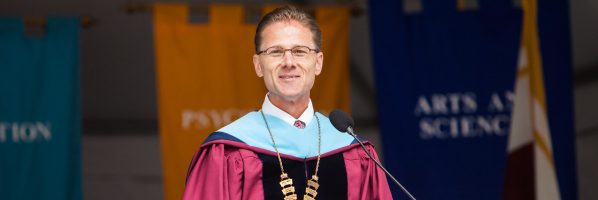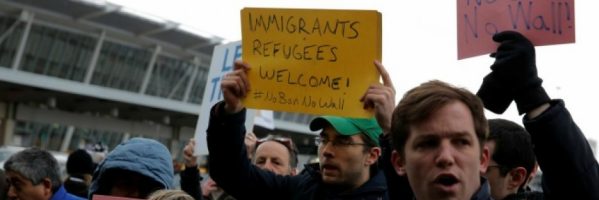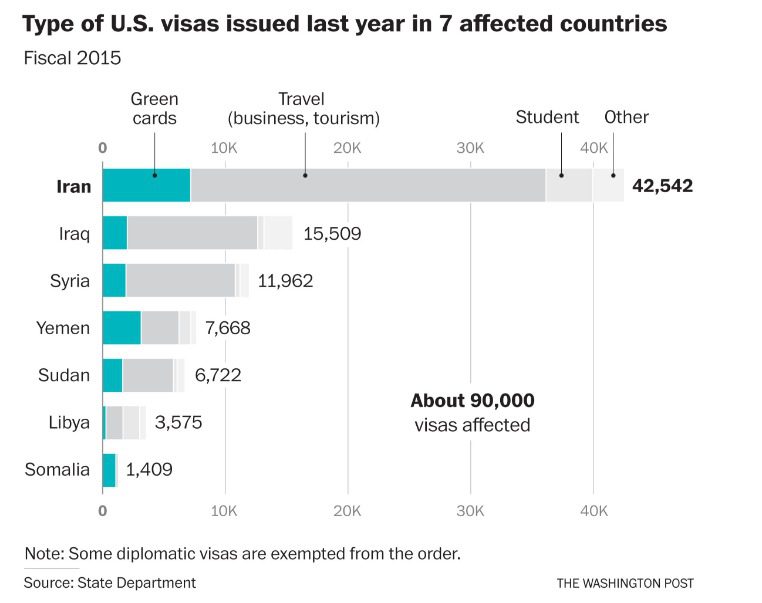Point Loma University Writes Letter to POTUS About Immigration

In early February, Point Loma Nazarene University President Bob Brower wrote an open letter to President Trump and Vice President Pence. In the letter, President Brower, alongside Jon R. Wallace, President of Azusa Pacific University and Jim J. Adams, President of Life Pacific College, spoke about the recent immigration policies. They asked President Trump to “consider the pain that these restrictions cause for many innocent people.”
Seattle Pacific University President Responds To Trump Travel Ban

With 100 undergraduate and 60 graduate students representing around 35 countries, Seattle Pacific University may as well be considered an international university. So, it comes as no surprise that when President Trump implemented his executive order to impose a travel ban to the United States for citizens of Iraq, Syria, Iran, Sudan, Libya, Somalia and Yemen, the University didn’t remain quiet. Instead, school President Dan Martin sent a message to every international student and all students, faculty and staff with friends and family overseas. Continue reading…
Trump Immigration Ban Stranding Business Students, Employees

On Friday, January 27, U.S. President Donald Trump signed his most prominent executive order of his early term; an effective Middle East immigration ban for at least 90 days.
The public outcry was defiantly swift and disruptive, with mass protests breaking out in airports across the country. In New York City, the New York Taxi Workers Alliance suspended all travel to JFK International Airport during the height of the protests, in which the United States effectively began turning away immigrants from Libya, Sudan, Somalia, Yemen, Syria, Iran and Iraq.
The implications are immeasurably vast. Prominent companies like Deloitte, McKinsey & Co. and Google—all of which hire many MBA graduates—have informed employees subjected to the terms of the ban, which also includes dual-citizens of the seven aforementioned countries, to cancel international travel plans for the time being.
Omid Scheybani, an MBA from the Stanford Graduate School of Business (GSB), spoke with Bloomberg after it became apparent he wouldn’t be leaving the country any time soon either. Scheybani, a dual-citizen of Germany and Iran, is stuck in California for now.
“I was invited to a wedding in Colombia, plans that I will probably cancel over the next few days,” he said in the interview. In March he was also planning a trip to Italy for first-year students. “It’s uncertain whether I will be able to attend, to lead this trip as well.”
Iran-born Khash Sajadi, also highlighted in the Bloomberg story, is the CEO of internet startup company Cloud 66. The 41-year-old works between London and San Francisco, but the ban has already warped plans to meet with clients stateside.
“That’s the problem we have now, we don’t know what to plan against,” he said. Sajadi hasn’t been to Iran in 11 years. His father, who lives in Iran, canceled a vacation to visit him and his two sisters, who also live in the U.S.
The Washington Post reports that around 90,000 people were directly affected from the immigration ban just between Friday and Sunday, January 29. This is in direct contrast from the White House, which claimed that 109 were affected. The 90,000 people, per the chart below, earned non-immigrant or immigrant visas according to the State Department in 2015. Visas, such as those for student, business and tourism purposes, only last for a finite period of time.

The chart above does include those who have dual-citizenship with any of the seven countries, which also numbers in the tens of thousands according to the State Department.
Of course, business students and employees aren’t the only ones included in those stark numbers. Students by-and-large are stranded across the country because of the immigration ban. And the implications of what is yet to come continues to flare the situation.
“If this could happen now—what does this mean if I were to be traveling for research or study abroad?” said Nate Mouttet, Seattle Pacific University Vice President For Enrollment Management. “Or if I am trying to come back into the country as someone who had a clear visa—will I be detained and not allowed back in?”
Stay tuned for more details as the situation continues to unfold.
